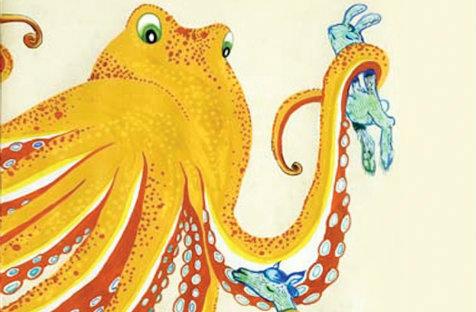Featuring six distinct voices expounding upon disparate themes in a diverse range of settings, Griffith REVIEW 38 pays homage to an increasingly emergent style of storytelling – the novella. Pithier than a novel yet longer than a short story, the novella is employed by each of these six writers as they present a snapshot of complex moral dilemmas with ‘fewer plot twists, but strong characters’ and ‘condensed tales that are intense, detailed, often grounded in the times’, to quote from editor Julianne Schultz’s introduction, ‘Reviving the Novella’.
Mary-Rose MacColl’s The Water of Life kicks off the collection. On her way home from a workshop, a writer witnesses an accident – a bus hits a young artist, who dies. MacColl traces the events that led to this ill-fated moment and the lives of the people affected by it – from the writer and bus driver to the victim, Jason Halligan, his mother, and his girlfriend, Kyah. By alternating between the different characters – with only the bus driver accorded a first-person narrative – MacColl expertly sketches the inexplicable ways each person in the tragedy is connected to one another and the grave ramifications of a single moment of distraction. MacColl ties the story together with an alternate ‘what if’ resolution that is at once galling and hopeful.
Lyndel Caffrey’s Glad is a poignant depiction of how a burgeoning relationship between can be rudely interrupted. Youngsters Bird and Glad yearn for the summer when they can finally get married. As with The Water of Life, Caffrey’s novella starts at the end, in 1924, as Bird leaves his hometown and moves up the coast:
‘A light rain scatters over the deck, barely touching him before it blows away and in just that moment he knows that Glad has left him for good. The rain passes and it carries her away. The world shrinks, it shrinks with her, it shrinks without her, it shrinks at the touch, and leaves nothing behind.’
Catapulting back to 1921, Caffrey deftly outlines the first flowering of Bird and Glad’s relationship with a tenderness and veracity that transcends the pages.
‘The night was theirs after that, every Saturday night the same, and it was brightly lit and loud and candy coloured and sweet and shiny. And this, this was the time of their lives, and if only they knew it.’
Katerina Cosgrove’s Intimate Distance is the longest piece of the collection; a stirring and heartfelt portrayal of one woman’s struggle to discover who she is. It details Mara’s deeply conflicted love for two brothers, and the aftermath of her life with a child and an ailing mother. With a Turkish-Greek heritage and a father she never knew, Mara leaves her mother in a nursing home and journeys across the seas to where it all began.
In the ancient city of Ephesus, Mara chances upon Zoi, a Greek doctor working in Turkey for a year who she follows back to Athens; an experience that will come to define her and forever change her life.
Moving back and forth between Ephesus, Athens, the isolated Greek village of Lithohori, and Sydney, where Mara hails from, Cosgrove’s unchronological narrative jumps between 2012, 2013 and 2017, and is vastly effective in charting the protagonist’s confused state of jumbled emotions, displacement and disarray.
With its overarching themes of forbidden love, abandonment, filial duty versus individual needs, and unresolved passion, Intimate Distance effectively delves into the dichotomy between the individualistic societies of the West and the more family-oriented, collective societies of Greece, where Mara simultaneously flounders and finds her very reason for being.
Perhaps this reviewer’s personal highlight, the fourth novella – Ed Wright’s An End to Hope – is a tragic and compelling tale that transports readers to a village nestled deep in the mountains of western Honshu, Japan. The war has robbed Tomoko of her two brothers and her betrothed, but just when she thinks her situation could not get worse, she learns of her parents’ wishes to marry her off to the village idiot, Gotaro. Tomoko’s complicated reality and notion of what is right and wrong is further confused by her discovery of a wounded enemy soldier in the mountains.
Kick-starting his novella with a paragraph that only reveals its meaning at the tale’s end, Wright traces the trials and tribulations of a 15-year-old girl with a light-hearted candour that gradually gives way to a sense of urgency as Tomoko finds herself at a pivotal crossroad in her life. Facing the decision to defend her family honour and live with the atrocities committed against her or uphold her personal integrity, Tomoko’s choice defines her life, and those of everyone around her, for decades to come.
In A Minor Loss of Fidelity, Christine Kearney deftly captures the inherent differences between life in Dili, East Timor and Darwin, Australia – brought into stark focus when Milly, the daughter of the central character, Kate, contracts dengue fever. In a region where mysticism prevails and young boys hang around in convention centre car parks offering women they chance upon ‘some meat’, Kate manoeuvres the complexities of contemporary East Timorese life by narrating the fairy tale of a Rapunzel-like girl and a witch named Bui Hikas to her daughters.
The final piece in the volume, Jim Hearn’s River Street, paints a visceral and confronting picture of heroin addiction and abject poverty as junkie Jimmy struggles to stay lucid and find a job as a cook.
Hearn’s attention to detail is meticulous as he describes Jimmy’s drug-crazed episodes, adroitly detailing the heightened sensations of being stoned and the languorous inertia in the aftermath of each episode. The juxtaposition between Jimmy’s smack-fuelled life and the frenzied undercurrents of working in a highly stressful kitchen makes for tense reading. Aquatic imagery is employed to imbue Jimmy’s existence with a sense of helplessness and futility:
‘I understand clearly that I could organise a better kind of life; a life that other people might consider more productive or normal. That I can’t…is because I’m trapped in the river’s flow. Everyone’s a victim of something.’
Overall, Griffith REVIEW 38: The Novella Project is a masterful body of fiction that expands upon various moral predicaments, and expertly illustrates the dexterity and versatility of the novella form. An eclectic and thought-provoking collection of stories, captivating from start to finish.
Rating: 4 stars out of 5
Griffith REVIEW 38: The Novella Project
Edited by Julianne Schultz
Paperback, 296pp, RRP $27.95
ISBN: 9781921922602
Text Publishing





